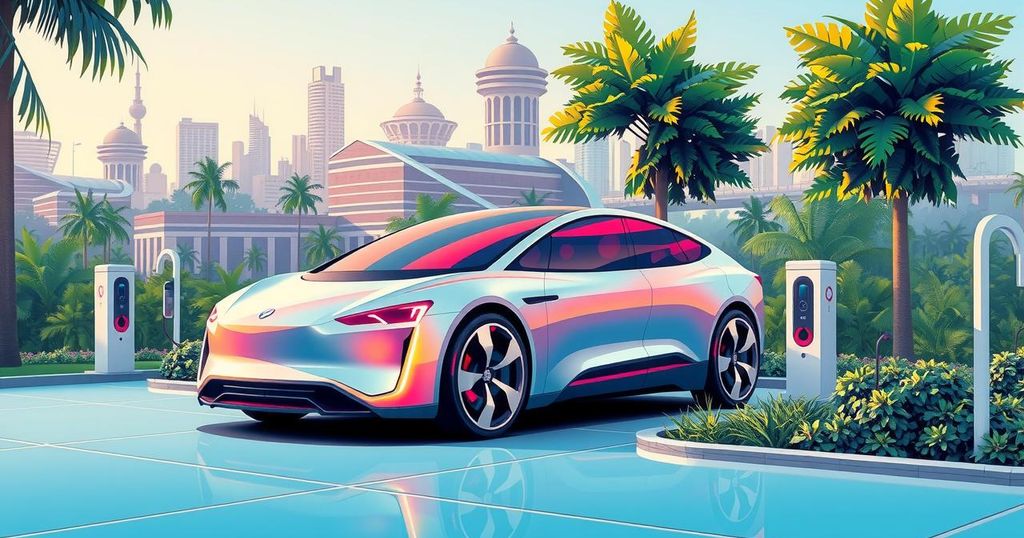Tesla’s Strategic Entry into the Indian Market: Challenges and Opportunities

Tesla faces challenges entering the Indian market after significant delays. The evolving EV landscape, increasing local competition, and the need for competitive pricing pose obstacles. The company is making moves to establish itself through hiring and showroom openings but must adapt its strategy to succeed in this diverse market.
Tesla’s long-awaited entry into the Indian market has encountered significant delays, leaving early investors disheartened after nine years of anticipation without seeing the brand officially launch its models. The automotive landscape in India has evolved, with a rising availability of competitive electric vehicles (EVs) reducing Tesla’s distinctiveness. The strategic question arises: did Tesla underestimate the timing of its Indian debut?
Despite the delays, Tesla is actively establishing its presence in India. The company recently hosted a hiring event in Mumbai, focusing on roles across sales, service support, and management, and has secured showroom locations in key cities. Moreover, it is beginning the homologation process for its Model Y and Model 3 vehicles, marking essential steps towards compliance and local sales operations.
India’s electric vehicle market, although currently small at roughly 3% of total vehicle sales, has shown significant growth, increasing from 5,000 units in 2020 to over 113,000 in 2024. This trend presents an opportunity for Tesla to capitalize on the expanding premium EV segment, according to Ravi Bhatia of Jato Dynamics. However, with strong domestic contenders emerging, Tesla must be aware of its decreasing technological edge against local manufacturers.
Experts like Chetan Maini suggest that Tesla’s entry would have been more advantageous two or three years ago when its technological advancements were more pronounced. He notes that the current landscape is challenging, with many local alternatives performing comparably. The Indian government also expresses confidence in local manufacturers matching Tesla’s capabilities, questioning the American company’s existing competitive advantage.
Tesla’s potential gigafactories in India could revitalize local manufacturing by producing EVs, batteries, and charging solutions. Yet, adapting its direct sales model to align with India’s dealer-centric market is crucial. Aftersales support is another vital component to consider, given India’s price-sensitive environment where most passenger vehicle sales occur below ₹20 lakh.
The cost of Tesla’s models presents a significant challenge. The standard Model 3 retails for approximately ₹37 lakh, classifying it firmly within the luxury segment, especially when factoring in import duties. Efforts to develop a more affordable $24,000 alternative have been mentioned but are not confirmed. If Tesla seeks a substantial market presence, it must provide better pricing and value than its competitors in China and domestic manufacturers.
There are indications that Tesla is considering contract manufacturing in India to exploit the available production capacity, albeit with potential risks regarding supply chain control and production expenses. Setting up own gigafactories in India could be more economical, with expected costs around $2-3 billion, significantly lower than facilities in the US and Europe due to cheaper labor and land. Various Indian states are proactively courting Tesla with competitive incentives to attract its manufacturing investment.
EV infrastructure, particularly charging facilities, has traditionally posed a concern for Indian consumers. Nevertheless, the rapid expansion of charging networks, coupled with most EVs providing substantial range, mitigates this anxiety. Tesla’s own supercharger network would require significant investment and time to establish but could enhance its appeal once launched, utilizing existing public charging avenues in the interim.
Ultimately, if Tesla seeks to thrive in India, significant investment in gigafactories, battery production, new model offerings, and competitive pricing will be essential. The long wait, combined with evolving market dynamics, compels the company to rethink its strategy and commit genuinely to establishing its brand in India.
Tesla’s entry into the Indian market may have become complex, signalling a need for strategic adaptation in response to local competitors and consumer expectations. While it has laid groundwork through recruiting and compliance, establishing gigafactories and effective pricing strategies will be crucial for its success. Building a robust EV ecosystem could enhance its position in this rapidly evolving market.
Original Source: m.economictimes.com





